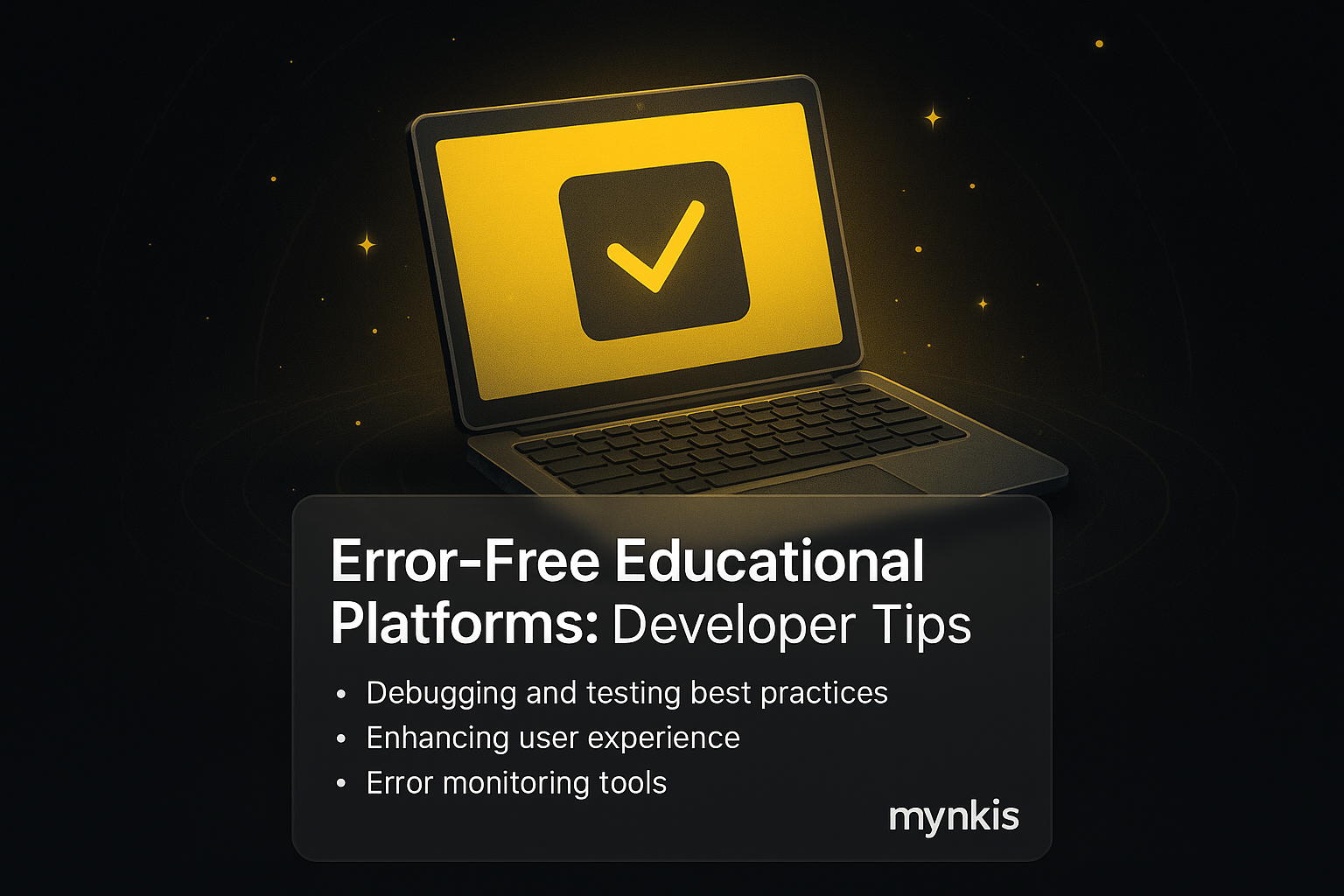Schedule a Demo
When building a custom learning management system (LMS) or website for schools and universities, developers must prioritize an error-free experience. A glitchy or slow platform can disrupt learning and reduce engagement, which directly impacts the effectiveness of digital education. In my experience working with educational institutions, ensuring that every piece of code functions without a hitch is key to fostering an environment where students and teachers can flourish.
Automated testing stands as one of the most potent tools in your development arsenal. It's not just about catching bugs; it's about preventing them from making it into the production environment. By implementing a robust suite of unit tests, integration tests, and end-to-end tests, developers can assure that each component interacts smoothly with the others. Based on available research, automated testing can significantly reduce defects in software releases, although results may vary by project scope and complexity.
Code reviews should be as integral to the development process as writing the code itself. When building custom LMS platforms, having a second pair of eyes on the codebase is invaluable. It's not just about catching errors but also about improving code quality, sharing knowledge, and adhering to best practices. Organizations like the IEEE advocate for code reviews as a standard part of software development, emphasizing their importance in delivering high-quality software solutions.
CI/CD practices transform the way educational platforms are developed by allowing for continuous improvements and rapid deployment. According to a report by Atlassian, implementing CI/CD can decrease development time and increase the quality of the released code. This practice not only helps in maintaining an error-free build but also facilitates quicker updates and adjustments based on real-time feedback from educators and students.
Static code analysis is like having a vigilant guardian over your codebase. It meticulously scans through the code to identify potential errors, security vulnerabilities, and adherence to coding standards without executing the program. Integrating tools like SonarQube or ESLint can streamline your quality assurance process, ensuring that your educational platforms are built on a foundation of solid, error-free code.
Building a modular codebase enhances not just the clarity and scalability of your custom software development but also its resilience against errors. Each module's independence means that a bug in one part of the system is less likely to bring down the entire platform. In my work with various educational institutions, adopting a modular approach has often led to more manageable updates and faster problem-solving.
Engaging with end-users—both students and educators—provides invaluable insights into the real-world performance of your system. Iterative improvement driven by user feedback ensures that issues are not just fixed but that the platform continuously evolves to meet the changing needs of educational environments. Feedback loops are crucial; they can significantly shape the user experience, particularly in search traffic optimization for educational websites.
Thorough documentation supports both the current development process and future updates. Documenting code, configurations, and user guides ensures that knowledge is transferred efficiently across teams and to new developers. Companies like GitHub recommend detailed documentation as a best practice, significantly aiding the maintenance of enterprise web solutions over time.
Establishing comprehensive error logging and real-time monitoring systems enables developers to swiftly identify and resolve issues. These systems provide critical data about how and when errors occur, which is essential for optimizing custom learning management systems and website search performance. In practice, I've witnessed how effective monitoring can save hours of troubleshooting by pinpointing exactly where and why an issue is happening.
Ensuring your platform not only functions correctly but also performs efficiently is paramount. Techniques like code minification, lazy loading, and server-side caching can dramatically improve the speed and responsiveness of your enterprise web solutions. As per insights from Google's PageSpeed Insights, page load times play a pivotal role in user engagement and satisfaction, especially for educational platforms striving for high search rankings.
Security is non-negotiable, especially when dealing with educational data. Employing secure coding practices from the outset, like validating all inputs, using secure protocols for data transmission, and regular security audits, safeguard your platforms against potential threats. The guidelines set by the National Institute of Standards and Technology (NIST) provide comprehensive security practices for any custom software development project.
Even with advanced technology, the human element—training and knowledge transfer—remains crucial. Ensuring that the developers and educational staff understand how to utilize and maintain the system effectively aids in error prevention. In my career, I've found that well-trained teams produce less erroneous systems and adapt quicker to any unavoidable issues that arise.
Building an error-free platform extends beyond tools and practices into the realm of culture. Fostering a workplace environment that values meticulousness, collaboration, and ongoing education significantly influences the final product's quality. Developers thrive in environments that encourage them to share insights, challenge one another's approaches, and continuously learn from both successes and failures.
Delivering a platform quickly is often a business necessity, yet not at the cost of stability and error-free builds. Developers must find a balance, often utilizing rapid iteration models but maintaining stringent quality checks before release. Achieving this equilibrium means projects can be timely while still upholding the high standards expected in educational technology sectors.
As the landscape of educational technology evolves, so too do the tools and methodologies for creating error-free builds. Emerging technologies like AI for code review or machine learning for predictive analytics in debugging promise new avenues for ensuring quality in custom software development. Staying abreast of these trends will keep educational platforms at the forefront of innovation, serving the community better by offering resilient, effective, and cutting-edge solutions.
